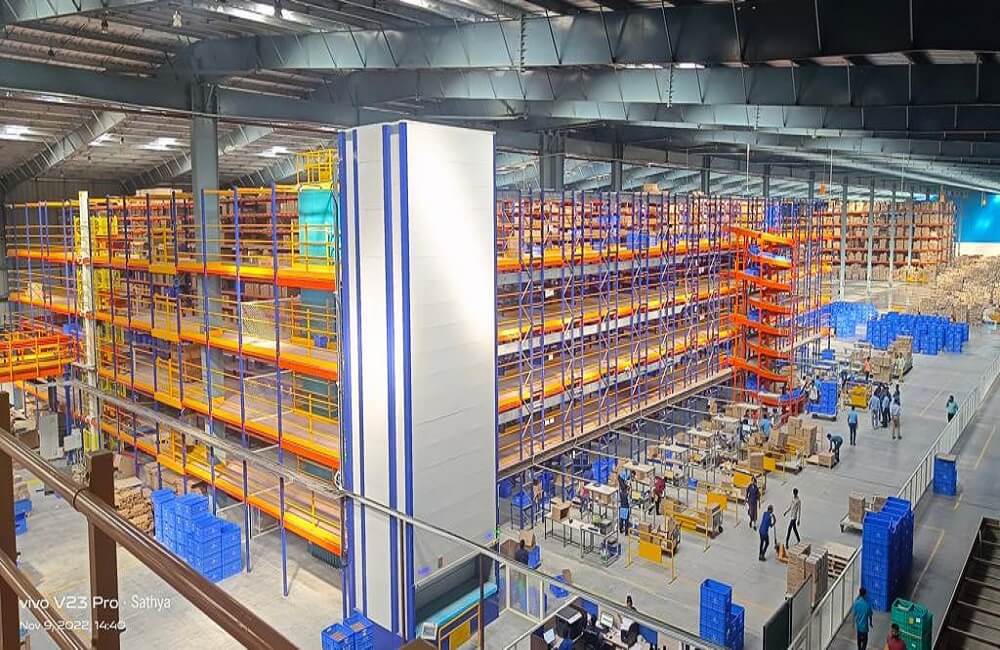In contemporary supply chain management, the paramount importance of flexibility and cost-effectiveness cannot be overstated. As consumer preferences and market dynamics undergo swift transformations and unexpected disruptions become more prevalent, businesses face the imperative of adaptability and efficiency to maintain their competitive edge.
Flexibility empowers companies to promptly respond to shifts in demand, identify risks, and capitalise on emerging prospects. Simultaneously, a focus on cost-effectiveness ensures judicious resource allocation and sustainable operational practices, fostering profitability while upholding standards of quality and service. Integrating these principles into supply chain strategies enhances resilience and positions organisations to thrive in dynamic market environments.
Understanding multi-user facility
A multi-tenant facility is indispensable for gaining comprehensive insights into intricate operational landscapes. These establishments accommodate the requirements of numerous users, fostering resource and infrastructure sharing to maximise cost-effectiveness and operational efficiency.
By centralising operations, these facilities encourage collaboration, capitalise on economies of scale, and streamline logistical processes. Furthermore, they provide a flexible framework for enterprises to expand their operations, accommodate scalability, and harness synergies among varied stakeholders.
Strategies to build flexibility in multi-user facilities and cost effectiveness
Implementing strategies to foster flexibility and ensure cost-effectiveness in multi-user facilities is crucial for smooth operations and optimised resource allocation. One effective approach is through adaptable space utilisation, where areas can be repurposed or reconfigured according to varying needs. This might involve modular furniture, movable partitions, or flexible layouts that can accommodate diverse activities and user requirements. Additionally, employing technology-enabled solutions like scheduling software and occupancy sensors can streamline resource allocation, allowing for efficient use of space, utilities, and equipment.

Founder and Managing Director
Varuna Group
Furthermore, adopting sustainable practices such as energy-efficient systems and waste reduction measures enhances cost-effectiveness and aligns with environmental goals. By prioritising flexibility alongside cost efficiency, multi-user facilities can better meet the dynamic demands of their users while maximising resource utilisation and minimising operational expenses.
An ideal flexible warehousing service
An ideal flexible warehousing service offers customisable storage solutions tailored to meet diverse business needs, providing scalability, cost-efficiency, and seamless adaptability to fluctuating inventory demands.
- Pay per use: Pay per use is a payment model where you only pay for your services or resources. This means you’re not locked into fixed contracts or fees. It offers flexibility and cost-effectiveness, especially for businesses with fluctuating storage needs.
- 100% put away and pick: Ensuring 100% put away and pick means that every item stored in the warehouse is accurately placed in its designated location and can be easily retrieved when needed. This efficiency minimises errors, reduces handling time, and improves overall productivity.
- 9% inventory accuracy: Inventory accuracy is crucial for businesses to manage their stock effectively. Achieving 99.9% accuracy means that almost every item in the inventory is correctly recorded and accounted for. This high level of accuracy helps prevent stockouts, overstocking, and costly discrepancies.
- Compliant warehousing: Compliant warehousing refers to adhering to relevant regulations and standards governing storage and handling practices. This ensures that the warehouse operates legally and safely, minimising risks of fines, penalties, or damage to goods.
- Advanced technology: Advanced technology, such as automation, robotics, and inventory management systems, can revolutionise warehouse operations. These technologies enhance efficiency, accuracy, and speed, enabling businesses to stay competitive in a rapidly evolving market.
- Well-trained workforce: A well-trained workforce is essential for smooth warehouse operations. Proper training ensures that employees can perform their tasks effectively, handle equipment safely, and adhere to best practices, ultimately leading to higher productivity and fewer errors.
- Pan India presence: Having a pan India presence means strategically locating warehouses nationwide. This allows businesses to reach customers in various regions quickly and cost-effectively, reducing transportation costs and delivery times. It also provides flexibility and scalability to adapt to changing market demands.
Emerging technologies impacting multi-user facilities
Integrating multi-user facilities offers a formidable solution to the dual challenges of flexibility and cost-effectiveness in modern supply chain management. By pooling resources, sharing infrastructure, and leveraging economies of scale, organisations can adapt swiftly to dynamic market demands while simultaneously optimising operational expenses. This strategic approach enhances agility and fosters collaboration and innovation within the supply chain ecosystem. As industries embrace the versatility and efficiency of multi-user facilities, it becomes advantageous and imperative for sustained competitiveness and success in the marketplace.



